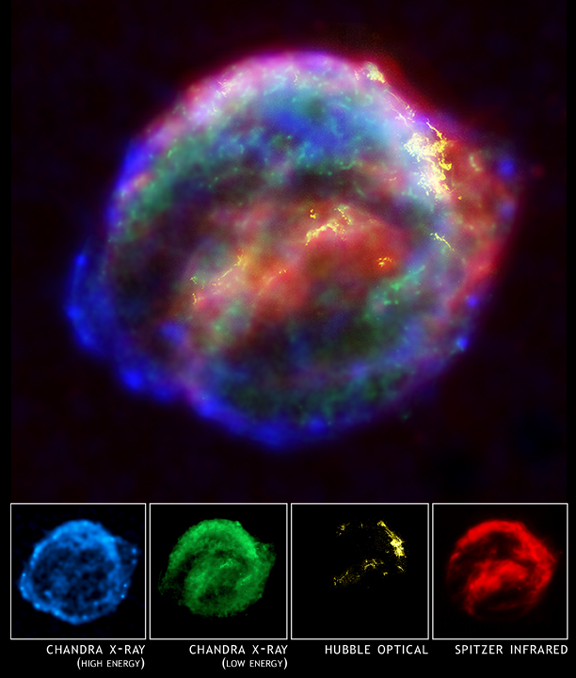
 Credit: NASA/ESA/JHU/R.Sankrit & W.Blair
Credit: NASA/ESA/JHU/R.Sankrit & W.Blair
A Great View
The last stellar explosion to occur in the Milky Way was seen on earth on October 9, 1604, and was the subject of a book by the famed astronomer Johannes Kepler, called "De Stella Nova" ("The New Star"). Since this was such a recent event (relatively speaking) the remains of the explosion has been studied intensely since Kepler's time. The best view of Kepler's Supernova Remnant is shown above. This image is a composite obtained by NASA's three operating "Great Observatories". The Hubble Space Telescope image of Kepler's SNR shows bright optical emission (shown in yellow in the image above) from the densest part of the supernova blast wave. The Chandra X-ray observatory shows hot gas from low density regions (in green and blue). Finally the Spitzer Space Telescope shows infrared emission from hot dust (seen in red). All together this composite provides astronomers with the best view of how the energy of the stellar explosion interacts with the star's surroundings.
Last Week *
HEA Dictionary * Archive
* Search HEAPOW
* Education
Each week the HEASARC
brings you new, exciting and beautiful images from X-ray and Gamma ray
astronomy. Check back each week and be sure to check out the HEAPOW archive!
Page Author: Dr. Michael F. Corcoran
Last modified Monday, 26-Feb-2024 17:45:46 EST


